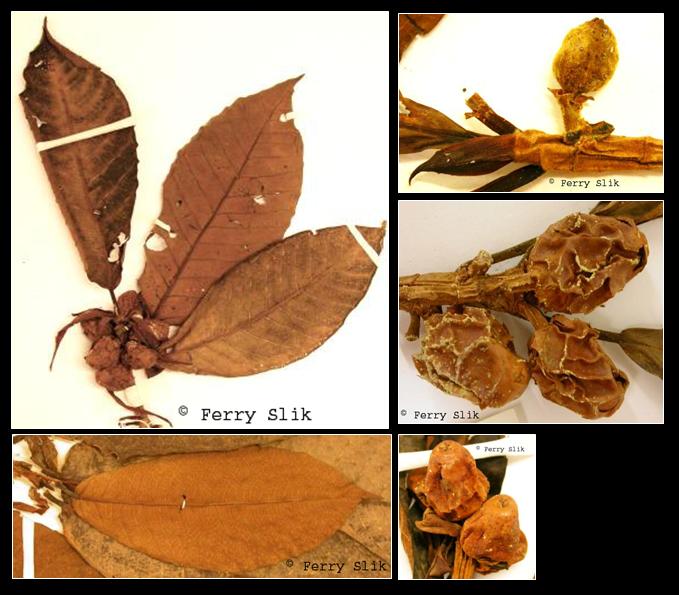Ficus annulata Blume, Bijdr. (1825)
Latin for 'ringed', probably referring to the stipule scars around the twigs.Synonyms
Ficus annulata var. biverrucellum (Miq.) Miq.
Ficus annulata var. elliptica Miq.
Ficus annulata var. flavescens (Blume) King
Ficus annulata var. valida (Blume) King
Ficus balabacensis Quisumb.
Ficus flavescens Blume
Ficus valida Blume
Urostigma annulatum (Blume) Miq.
Urostigma biverrucellum Miq.
Urostigma conocarpum Miq.
Urostigma depressum Miq.
Urostigma flavescens (Blume) Miq.
Urostigma validum (Blume) Miq.
Diagnostics
Mid-canopy tree (strangler fig) up to 32 m tall and 87 cm dbh. Stem with
white sap. Stipules ca. 28 mm long, glabrous. Leaves alternate, simple, penni-veined,
glabrous to hairy below. Figs with very short stalks placed in leaf axils, ca.
26 mm long, green-yellow-orange, fleshy.
Description
Monoecious strangler, without free hanging aerial roots. Twigs grey, ridged. Stipules
lanceolate, 1.5-3.5 cm long, acute, glabrous or velvety hairy outside, caducous or
persistent. Leaves thin-coriaceous, drying chocolate-brown, glabrous or hairy below;
elliptic, 10-32 x 3-11 cm, base wedge-shaped, margin entire, plane, apex acute; midrib
raised above; lateral veins 7-16 pairs, distantly spaced, with short intermediate veins,
curved, looping and joining near the leaf margin, faint above, distinct below, basal pair
distinct, departing at an acute angle from the midrib; intercostal venation reticulate,
visible below, very faint above; petiole 1-6 cm long, drying black. Syconia borne on
twigs behind the leaves, golden yellow, ovoid or ellipsoid, 2.5-3.5 x 2-3 cm, apex
umbonate, surface irregularly rugose on drying, not covered by irritant hairs; sessile or
with peduncle up to 2 cm long, with ring-like swelling towards the apex; basal bracts 3,
tiny, persistent. [from Tree Flora of Sabah and Sarawak]
Ecology
In undisturbed mixed dipterocarp and seasonal forests up to 1300 m altitude. Usually on
alluvial sites near rivers and streams, but also on hillsides and ridges. On
sandy to clay soils.
Distribution
Burma, Southern China, Indo-China, Thailand, Peninsular Malaysia, Sumatra,
Java, Borneo, Celebes.
Local names
Borneo: Ara susu, Kara, Kayu ara.
China: Huan wen rong.
